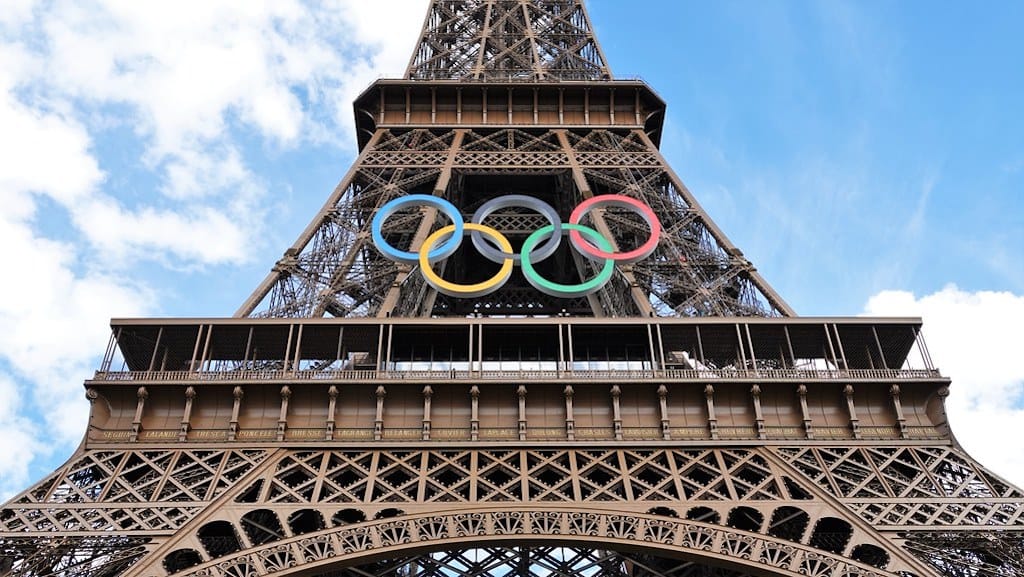A Hymn to Love

Did you stay up to watch the opening ceremony of the Paris Olympics on Friday 26 July? I preferred to watch it at leisure a couple of days later.
I thought the weather played spoilsport to what would otherwise have been a truly magnificent spectacle. But I am rather surprise that not enough advance preparation was made for the possibility that the Parisian skies might rain on the parade.
It still was a musical delight, with the light classical fare alone having a parade of its own: the theme tune from Anderw Lloyd Webber’s ‘The Phantom of the Opera’ (which is set in the Opéra de Paris); synthesiser versions of the theme from the last movement of Dvořák ‘New World’ Symphony no. 9 as the refugee athlete barge sailed past, and of Offenbach’s ‘Can Can’ soundtracking a spectacular ballet sequence; and Bizet’s famous ‘Habanera’ from his tragic opera ‘Carmen’ sung by a mezzo-soprano. There were snatches of Camille Saint-Saëns’ ‘Danse macabre’, Debussy’s ‘Prélude à l'après-midi d'un faune’ (Prelude to the afternoon of a faun), and Dukas’ ‘The Sorcerer’s Apprentice’.
When the cathedral of Notre Dame came into view, we heard Claude-Michel Schönberg’s music to ‘Les Misérables.’
But more than one wag pointed out the “appropriateness” of Ravel’s Jeux d’eau (‘Water Games’) played by Alexandre Kantorow as rain pitter-pattered on the closed lid of his grand piano.
The image of the French National Orchestra playing at the rain-soaked Trocadero next to the Eiffel Tower quickly went viral too. The musicians wore ponchos, but seemed drenched nevertheless (the French saying “trempé jusqu’aux os”, “soaked to the bone” came to mind). But the poor stringed instruments and bows were cruelly exposed to the almost-relentless downpour. That they were ‘less valuable’ instruments still shows disrespect to the music profession.
One can only guess that the orchestral music must have been pre-recorded, because wet bows cannot play on wet strings. It’s simple physics.
How such an elementary detail as the weather could not be factored into such a momentous event that was undoubtedly years in the planning boggles the mind.
The supposed parody of Leonardo da Vinci’s ‘Last Supper’ frankly went by so quickly for me that I didn’t even make the correlation between the two until I read about the ‘controversy’ later.
It was wonderful to see and hear Celine Dion sing the closing song, an Édith Piaf classic, ‘Hymne à l'Amour' (Hymn to Love). It was Dion’s first public performance after she was diagnosed in 2022 with stiff-person syndrome, a rare neurological disease.
The song took me back to 2009, to of all places, Lisbon. I had made a trip to gather information in advance of our first Casa da Moeda festival. I was however crestfallen to find that, in the week I was visiting, there were absolutely no classical music concerts there. I missed a concert by pianist Daniel Barenboim by just a couple of days.
But bizarrely, what was on offer was a play, a musical celebrating the life of arguably France’s greatest popular singer Édith Piaf (born Édith Giovanna Gassion; 1915 – 1963). I say bizarrely, because while the spoken parts of the play were in Portuguese, the songs were sung in the original French! Although neither is my preferred language, I found it quite gripping.
To say Piaf (a nickname ‘sparrow’ which reflected her diminutive size, 4 feet, 8 inches) had a tragic life would be an understatement. Her torch ballads (sentimental songs) about love, loss and sorrow often came from personal experience.
Piaf was abandoned at birth by her mother, a brothel-keeper. When her father enlisted in the army during World War I, he left her with his own mother, who ran a brothel in Normandy, so she was raised by prostitutes. From three to seven years, she was allegedly blind due to keratitis, until the women took her on a pilgrimage to honour Saint Thérèse of Lisieux after which she regained her vision.
She began to sing in public when accompanying her father at acrobatic street performances. At seventeen, Piaf got pregnant and delivered a girl who died two years later of meningitis.
Although there were many men in Piaf’s life on her path to stardom, the big love of her life was the French professional boxer Marcellin ‘Marcel’ Cerdan. They met during her US tour in 1947. The tumultuous affair made headlines as Cerdan was the former middleweight world champion, and at the time was married with three children.
Piaf wrote the lyrics to ‘Hymne à l'Amour' (music by Marguerite Monnot, who often collaborated with Piaf) in 1949, quite obviously for Cardan. Tragically, a month later, on28 October 1949, Cerdan was killed in a plane crash (Air France Flight 009; another renowned victim was the French violinist Ginette Neveu, aged just 30) on his way from Paris to New York to come to see her.
Piaf recorded the song the following year. The lyrics seem quite prescient with the benefit of hindsight. Monnot’s music also fits the words so perfectly.
The melodic phrase for the first lyric line retains its shape but a tone higher for the second, to describe the same catastrophic event: “The blue sky may collapse, the earth may collapse.” The next musical motive for “Little matters to me” is then inverted on itself to fit “if you love me.” The leaps in musical intervals add to the emotional intensity of the song.
The pattern repeats for the next verse, ending in a perfect cadence to match the lyric “because you love me,” an affirmation of love.
The relative minor key is used for the singer’s declarations of impossible feats for love: “go to the end of the world,” “take down the moon”, “steal a fortune,” “renounce my country.” Each declaration climbs higher and gets more fevered and anguished.
The final verses follow the melodic shape of the beginning two, and the lyrics are the most poignant: “If one day, life tears you away from me, /If you die, then you will be far from me. /What does it matter if you love me, /because I will die too. We will have for us, eternity /in the blue of all the immensity, /In heaven, no more problems. /My love, do you believe that we love each other? /God, reunite those who love each other.”
Piaf dedicated the song to Cerdan. Her first attempt at marriage (1952) ended in divorce five years later. She got married again in 1962, to actor and singer Theo Sarapo, (who was twenty years younger), but died the following year of liver cancer.
It would be hard to find a more heart-wrenching paean to love than this ultimate ‘torch song’ of love and loss.
This article first appeared in The Navhind Times, Goa, India.





